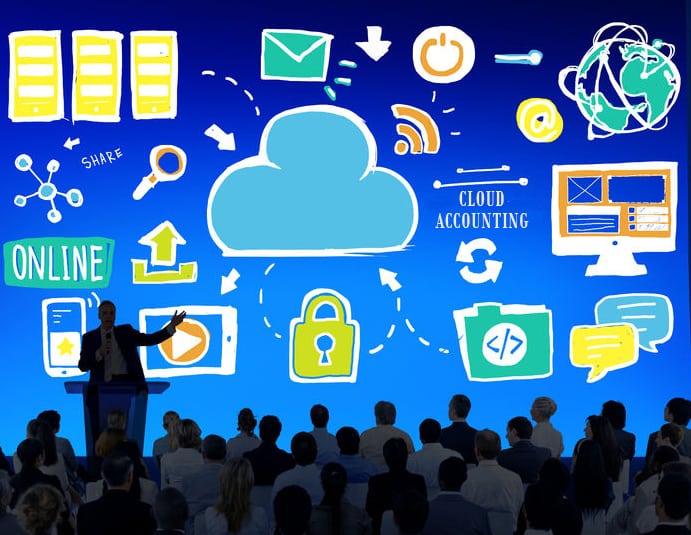Running an event of any kind for your accountancy firm is exciting. Whether it’s a small gathering of 10 clients in your downstairs boardroom, or a massive event for hundreds of people held in a top-class venue, there’s always a bit of a ‘buzz’ around it.
You give your presentation – or a guest speaker does – and the event attendees engage with it. Perhaps ask questions. Afterwards, you speak with them individually about their issues or problems or business growth and you (or they) realise how much you can help them.
It’s exciting. It’s fun.
It’s over.
And it hasn’t even started yet.
Accountants are actually pretty good at holding events. Most of the firms I work with, or talk to, have delivered at least one event – and many of you are running these events on a regular basis. Quarterly. Monthly. Weekly, even.
But when the event ends, you go back to your ‘normal work’ – and that’s a big mistake.
The real work starts when the event finishes.
Remember our discussions on primary calls to action and secondary calls to action on your website? The reason you have ‘secondary calls to action’ is that not everybody is ready to buy when they land on your site.
Similarly, not everyone is ready to do business with you after attending one event. Some of them are – and you can capture their interest and possibly even their acceptance right there at the event. Great news! Well done! More excitement!
…But what about the other 80% of your attendees? Or 90%?
Being in professional services, particularly in accountancy, means that your buyers need to trust you before they do business with you.
Building trust is critical for your accountancy firm marketing.
And how do you build trust?
Events. Speaking engagements. Blog posts and website content and videos and ebooks and business guides – that are relevant, useful, and applicable to a specific audience.
(On a separate side rant, buying a generic business guide and slapping your logo on it and calling it good may feel very productive, but you’re not thinking about your audience. All you care about is having “something” on your website so you can get email addresses. Your prospects see right through you. If it’s produced in bulk, then your personality and the uniqueness of your firm will never shine through. End rant, I’ll write that as a separate blog post later!)
So for those who attend your event, they’ve met you personally – you and/or some of your team. They’ve seen how you talk, what you know, how you do business. Stephen Paul of Valued says that one of his litmus tests for whether he will do business with someone is, “Would I have a beer with them?” Google has the layover test (would you like to be stuck in an airport for ten hours with them?). Your event attendees are evaluating you as a person, as a firm, and your event is a brilliant way to do that.
But just because they’d have a beer with you, or like you, or could see themselves working with you, doesn’t mean they are ready – right now, today – to start.
This could be for a multitude of reasons.
Perhaps they’re just scouting information (about auto enrolment or Xero or raising finance). Or they haven’t started their business yet. Or they have three businesses and the one that relates to your event isn’t a priority. Or they’re going on holiday, or having a baby, or any number of things is happening and it’s not quite time.
But if they’re the right person, at some point in the future it will be time.
And you need to be top of mind when that time comes.
So that’s why your event marketing kicks in big-style after the event is all over. You’ve gathered the feedback forms (online or offline), shook hands with the last person leaving, snapped photos of the flip chart illustrations, and put the laptop back in its sleeve.
Now what?
Well, most of your follow up needs to be prepared ahead of the event. So whether you just finished one or are running it next week, here’s what needs to be set up for afters:
Prepare your event follow up ahead of time.
1. Identify a clear, simple call to action.
What one thing do you want them to do? If you don’t know, neither will they – and they won’t do it.
Remember, “call us” or “arrange a free consultation” are the kinds of calls to action that are either too vague or feel sales-y. We all know what a free consultation really means: a sales meeting. Call it something else, and keep it specific to your event.
Running an event around Xero? Invite them to try Xero for themselves for a month, or two months. Same thing with a Xero add on such as ReceiptBank or Chaser. (Those are easy wins – one will save them time and the other will bring them money. Great way to test the waters.)
2. Ask them – clearly – to take the action.
Whatever your call to action is, mention it multiple times throughout the event. (You may even want to mention it beforehand as an impetus to attend.) Ask them point blank if they want it.
This is an area that many accountants struggle with. “You just said a free consultation sounds salesy! I can’t ask them if they want a free Xero trial!”
Amazingly, the reason a free consult sounds salesy is because it’s vague. (What is a consultation? Why is it free? Are they going to sell to me?) But a free trial is clearer – as is the offer to download a PDF, attend a future event, register for a webinar, sign up to get a free Tshirt. You either want it, or you don’t. Encourage them to make a decision.
3. Publish the event everywhere online.
This is the point at which you are glad that you have that Twitter account, LinkedIn, Google Plus, etc. Share your event. Create a hashtag for your event. (That’s a whole blog post in itself.)
Create a website landing page – or at a minimum, an Eventbrite registration page. If you run events regularly, create an events page and make sure that all your upcoming events are listed there. (If you have a WordPress site, an Eventbrite widget will integrate with it so your events appear, and people can register directly from your website, and then the event will disappear you’re your page once it’s over.)
4. Prepare follow up emails for attendees and registrants.
Your follow up emails exist to remind them that they attended (or didn’t), and to encourage them to take action if they haven’t already.
They also continue building rapport with your event attendees long after the event is over.
At a minimum, I would suggest:
- Invite 1: Hi, we’re running this event! Please come.
- Invite 2: Here’s some more information about that event. It shall be good. Come.
- Invite 3: The event is next week! Don’t miss out!
- Invite 4: Our event runs tomorrow! REGISTER
- Follow up 1: Thanks for attending! (Or, sorry you missed it) Make sure to [take action].
- Follow up 2: It’s been a week since our event – have you…[taken action]?
- Follow up 3: Here’s some helpful information related to our event. We thought you’d like it.
- [From this point your event attendees should slot into your standard email marketing.]
5. Get in touch personally with those who showed an interest.
In some ways this is the easy part, and the fun part. But what if you’re not sure if they’re interested? What if you talked to one of the attendees for 20 minutes and they never filled in a feedback form, took action, or replied to an email?
Well, it’s up to you. But it can’t hurt to pick up the phone and say, “Hi Karen, it was great to chat to you at our event about [whatever it was]. How’s it going?” Worst case they’ll say it’s fine, thanks, nice to hear from you, goodbye. Best case they’ll say “Actually I’ve been meaning to call you about…” – and you’re off and going!
6. Segment them in your database.
The best marketing is done in a segmented manner – if they attended, you send them a “thanks for attending” email that is unique to attendees. If they missed out, you wish they could have made it and provide some event downloads. If they never registered at all, you encourage them to attend another event.
The same thing goes for niche and industry and issue – send auto enrolment email updates to businesses that have employees, not the freelancers. Send R&D tax credit updates to the creatives and tech sector.
Similarly, with an event, it’s important to keep track of their level of interest so you know how to market to them in future. Which brings us to….
7. Invite them to future events.
Whether they attended or didn’t, make sure that they are invited to future events (as long as they’re relevant – see the point above).
The key with your follow up is to keep it going. Follow up – and do it forever.
This becomes a beautiful long-term cycle – they come (or don’t) to your event, you encourage them to take action, which they do (or don’t), and then you invite them to another event or action, which they do (or don’t), which leads to…
You get the idea.
So if you’re running an event, or considering it, make sure your follow up is prepared beforehand – and keep up the good marketing work long after the event is done. If you need help, use one of our outsourced marketing packages or our assisted webinar delivery.
Both your event attendees and your firm will be glad you did!

